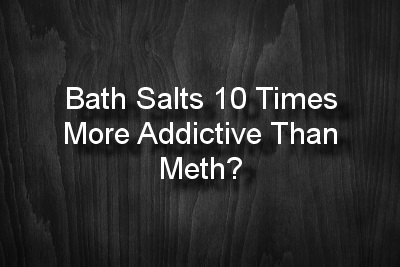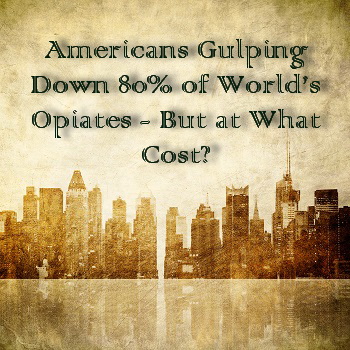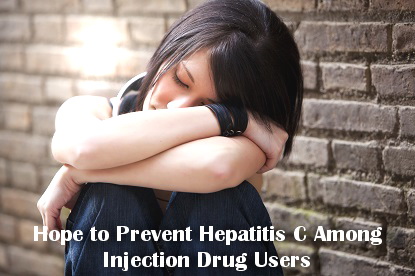Amelia liked to think of herself as a survivor—soft but strong, able to persevere. Raised by a mother with mental illness, she knew a lot about how to handle difficult people and delicate events; it seemed she’d been walking on eggshells for as long as she could remember. Her father had left when she was 12 and the care and keeping of her mother, who only grew more unstable as a result, had fallen exclusively to Amelia. By the time she was 17, she was an expert on her mother’s medical records, how and when she needed to take her medication, and was working to support the two of them. She never made it to college. Maintaining a full-time job and the constant attention required in the care of her mother didn’t leave time for school.
As anxiety settled in throughout her 20’s and with the occasional “dark moods” that lasted months sometimes, Amelia found herself less and less capable of enduring not the physical hardship, but the psychological. Still, she wanted nothing to do with therapy; why should she spend upward of $100 an hour talking about herself? Life was just the way it was. When headaches started to overtake her, she finally saw a doctor.
Offering her full history to the small town general practitioner, Amelia was persuaded to provide a background. She discussed not only her unrelenting headaches but also the steady sense that things simply weren’t right—how she shook nervously and sweated. Her GP prescribed benzodiazepines to be used for acute episodes of anxiety and opiates for what he determined were migraines.
For a while, Amelia found comfort in the hypnotic quality of the drugs. It was as if she were floating somewhere just outside herself and nothing could harm her there. As weeks and months wore on, however, Amelia discovered that the recommended dosage no longer treated her anxiety or her pain. She began to increase her dosage. When she was threatened with eviction after one of her mother’s “incidents”—she’d taken after the neighbor with a garden hoe—it all became too much. Amelia made it through the experience relatively unscathed, but she’d discovered something useful to her: her medications were more powerful when combined with wine.
It wasn’t until a friend noticed how much Amelia was taking that she questioned it herself. She realized she’d been relying exclusively on the medication and the sense of escape it gave her, taking it every four hours whether she needed to or not. But when she tried to quit she discovered something even more alarming—she couldn’t.
Gendered Differences in Addiction
The CDC reports that between 1999 and 2010, opioid overdose deaths among women increased fivefold, while the numbers for men increased three times. Since 2007, more women have died from prescription overdose than in car accident related injuries, cervical cancer or homicides. Further studies reveal that while women tend to become addicted later than men, they do so more quickly. Once addicted, women are more vulnerable to relapse, and are less likely to seek treatment than men. According to Constance Scharff, Ph.D., “Women most often use drugs to deal with stress and regulate moods.” Women are prescribed potentially addictive medications more often than men, and for longer periods. This may be because women are speaking more openly with their doctors about both physical and psychological complaints, but the reasons are not entirely understood.
Prescription drug dependence may go unnoticed even to the user—many believe that because the medications are prescribed, they are safe. When more than the recommended dosage is being used and for longer than is required and when symptoms of withdrawal (such as nausea, agitation and sleep disturbance) occur at the cessation of the medication, addiction should be considered.
High-Risk Group
Recovery from prescription drug dependence is as important as any other addictive substance or process. The White House considers women to be among the top three high-risk groups for addiction, and looking at the numbers for accidental overdose deaths, it is no wonder. Long term abuse of certain addictive prescription medications, such as the benzodiazepines, carry potential consequences: “over sedation, impairment of memory, balance and learning, depression and emotional blunting.”
Treatment for Prescription Drug Addiction
Treatment for prescription drug addiction is similar to other treatments for addiction; it consists of a behavioral component wherein addicts learn to cope with life stress or physical pain without the use of medications, and where previous users are taught to become self-observant and proactive when cravings arise. There is evidence that psychotherapy in combination with NA group attendance, or another form of collective substance abuse support, can be effective in helping women recover. Given the high pressure lives that so many modern women contend with—where work outside the home is a foregone conclusion even while work inside the home does not diminish—the stress and pain that lead many down the slippery slope of secret addiction is unsurprising. What is most important is that women like Amelia find the help they need to recover—including doctors who better understand the risks of prescribing medications known to create dependence.
Across the U.S., public school health classes and counselors continue to teach about the dangers of drugs like alcohol and cocaine. In the last few years, however, students have begun to learn about what public health officials are identifying as a much larger problem: prescription drugs.
Last year, the pharmaceutical industry released a statement saying that 4.02 billion prescriptions were written in the U.S. in 2011. This comes out to about 13 prescriptions for every American, an all-time record in the U.S. But are all these prescriptions fueling the current prescription drug addiction and overdose rates?
The Statistics
- U.S. doctors wrote 4.02 billion drug prescriptions in 2011.
- According to the CDC, nearly half of the U.S. population has taken at least one prescribed drug during the last month, and more than 20 percent of the U.S. population has taken three or more.
- More than 75 percent of doctor office visits involve prescription drugs.
- More Americans die from prescription overdose than from cocaine and heroin combined.
- Since 2008, more Americans die from prescription overdoses than from car accidents every year.
- In 2011, 16,500 Americans died from prescription painkillers alone.
- Since 2000, the number of prescription overdoses has more than doubled among men, and more than quadrupled among women.
- Americans consume 80 percent of opiate painkillers produced worldwide.
- An estimated 36 million “serious adverse reactions” to prescribed medications in the U.S. every year.
A Growing Epidemic
The dramatic rise of drug prescriptions written every year in the U.S. seems to mirror the alarming rise of prescription drug overdoses, and many experts, including doctors and public health officials, are looking at the issue more seriously. These drugs are very beneficial, but at what cost? Some of the more popular prescribed drugs happen to be some of the most familiar, appearing in magazine, radio and television ads across the country. A recent report released by a London medical journal states that for every $1 spent on researching a particular drug, an additional $19 is spent on promotion and marketing.
The Country’s Most Popular Prescribed Drugs
The numbers of prescriptions written have risen for many drugs across the board in the last decade, and certainly in the last several years. Note that many of the county’s best sellers are not often involved in many overdose deaths (with the exception of hydrocodone). As of 2010, the most popular prescribed medications include:
- Hydrocodone (opiate combined with acetaminophen/Tylenol): pain reliever
- Zocor: drug treating high cholesterol
- Lisinopril: drug treating blood-pressure
- Synthroid: synthetic thyroid hormone
- Norvasc: drug treating blood-pressure
In 2011, the figures changed somewhat, with the anti-depressant Zoloft taking the top slot, followed by the cholesterol medication Lipitor. Sales of drugs treating attention-deficit hyperactivity disorder also jumped, rising 17 percent from 2010.
Most Dangerous Prescribed Drugs
As fatal prescription drug overdoses continue to climb, scientists have been focusing their research on the main drivers behind the epidemic, trying to find which drugs are most likely to cause harm. Opiate painkillers, with their powerful addictive and sedative properties, continue to top the charts and include popular painkillers like OxyContin, Hydrocodone and Vicodin. However, doctors have been aware for some time that taking multiple prescription medications heightens the risk of an overdose.
Medical News Today, for example, reports that many reported fatal overdoses have involved multiple prescription drugs or alcohol. A group of anti-depressants known as benzodiazepines (which includes brand names such as Xanax, Valium and Ativan) seem to be a major contributor, and are involved in about 30 percent of opiate painkiller deaths. This is the first study to point toward a particular group of medications as a dangerous combination with opiates. The danger of alcohol in conjunction with opiates, however, is very well documented.
Of all prescription overdose deaths in the U.S., the ones most commonly involved, alone or in combination with others, are listed below:
- Opioid painkillers: found in about 75 percent of overdoses
- Benzodiazepines: found in about 30 percent of overdoses
- Anti-depressants: found in about 17 percent of overdoses
- Drugs for epilepsy and Parkinson’s: found in about 8 percent of overdoses
The Industry’s Response
The pharmaceutical industry greeted the latest numbers on written prescriptions with enthusiasm. After all, it’s a sign that the industry is growing. When confronted about the alarming rise in prescription drug deaths, manufacturers like Purdue have so far responded with statements about their labeling practices and commitment to working with government officials.
Medical News Today has pointed to unethical online pharmacies as part of the problem. It’s true that recent studies show a link between Internet access and an increase in prescription drug abuse, but doctors are still wary, stating that more studies need to be done. Most likely, online pharmacies (like some corrupt pharmacies elsewhere) comprise just one of many venues that addicts use to get their drug of choice.
Perhaps simply stating that patients and doctors need better communication, or that patients need to read labels more carefully, isn’t enough to combat the problem. After all, Americans consume 80 percent of the world’s supply of opiate medication every year—does this really mean Americans are in more pain than everyone else, or is this a reflection of a broader problem? Whether or not the pharmaceutical industry has any responsibility in the rise of overdose deaths, the problem remains and affects everyone, from preteens to the elderly. Unlike the scary drugs we all learned about in school, these drugs are used and abused by almost every demographic. Complicating the issue even further, these same drugs also help save and improve lives. The question now should be: how do we lower abuse and fatality rates of prescription drugs without restricting access to the patients who really need them? It really is a tough question to answer.
Of all of the recent designer drugs that have hit the market, few have attracted the level of attention as bath salts. The drugs were initially blamed for the zombie-like, cannibalistic attack in Florida last year, but it was later found that marijuana was the only drug in the attacker’s system. Regardless, the addictiveness of bath salts and the risks associated with their use have become more well-known, leading to a U.S. ban of many of the drugs. Their potency, however, has meant that many users still take them and expose themselves to these risks. They might not turn users into cannibals, but new research suggests that the drugs are actually much more addictive than methamphetamines.
What Are Bath Salts?
They definitely aren’t chemicals you use when you take a bath—they’re just marketed as such in order to make legal punishment more difficult to rain down on the producers. Bath salts are essentially stimulant drugs that have comparable effects to amphetamines and MDMA. In essence, there are several different types of bath salts, and they can be more accurately described as synthetic cathinone compounds—like the active substance in the drug khat. You can’t really know which chemicals are in the substance you’re taking.
There are many risks associated with the drug, with reports of chest pain, rapid heartbeat, aggressive behavior, hallucinations, delusions, paranoia and high blood pressure. Studies on the substances are limited, however, because they’re relatively new, and it’s merely assumed that the long-term effects are comparable to those of methamphetamines because of the chemical similarities. In 2012, there were more than 2,600 calls to poison control centers about exposure to bath salts.
Studies on the substances are limited, however, because they’re relatively new, and it’s merely assumed that the long-term effects are comparable to those of methamphetamines because of the chemical similarities. In 2012, there were more than 2,600 calls to poison control centers about exposure to bath salts.
The Study
These issues (and the relative scarcity of studies addressing the drugs) led some researchers to look at one specific cathinone compound, 3, 4-methylenedioxypyrovalerone—or simply MDPV. The researchers used rats—which have similar neurological “reward” pathways to humans and are therefore useful for studying addiction—that had been trained to press a lever for a reward. They initially received food for their lever-presses, but the researchers had them hooked up to an intravenous infusion of drugs, which became activated for the study period. The rats received MDPV or methamphetamine, with the aim of investigating the differing effects of both drugs.
The Findings
The most shocking result from the research is the finding that the rats who were hooked up to the MDPV pressed the lever for a dose significantly more often than those who had methamphetamine. The researchers point out that the number of lever-presses is analogous to the amount of effort the rats are willing to put in to get a dose of the drug. The rats pressed the lever an average of 60 times to get access to meth, whereas for MDPV the number was 10 times higher, at an average of 600 presses. The results seem to show that bath salts are exponentially more addictive than methamphetamine, with some rats pressing the lever up to 3,000 times for a single dose.
Additionally, the researchers also looked at the repetitive behaviors that are common in humans who take bath salts. They found that the rats receiving higher doses of MDPV displayed many similar behaviors, such as excessive licking, skin-picking and teeth-grinding. The researchers reported that some of the MDPV-dosed rats were so intent on licking the transparent walls of their cages that they were unable to interrupt them.
Conclusion
These findings serve as evidence that bath salts could be notably more addictive than meth, according to the researchers, and they concluded that the potency of the drug means that it’s likely to stick around despite its now illegal status. In other words, the study suggests that bath salts are so addictive that they may join the ranks of commonly abused illegal drugs, rather than being replaced by another temporarily legal designer drug.
Of course, the major problem when it comes to bath salts is in the wide variety of substances and the fact that long-term studies are currently unavailable. The researchers are moving on to both of these areas for future studies and plan to investigate the long-term behavioral impacts of bath salt abuse and the different effects of the newly produced cathinone drugs. The story comes as a stark reminder that legality doesn’t equal safety when it comes to drugs—in fact, the changes made to their chemical structures in order to skirt existing legislation could make them even more dangerous. Bath salts are particularly susceptible to this, because there isn’t one “formula” for the drug—one batch could be drastically, fatally different from another and the user would have no way of knowing.
Daphne sat across the table from her husband and mouthed the words, “I hate you.” Then she painted a charming smile on her face and ordered a salad. She and Sam were out to dinner with his family, something they did only rarely because of what Sam’s mother referred to as “Daphne’s drinking problem.” What no one at the table knew was that Daphne had a gram of cocaine in her clutch and no plans to drink more than one cocktail. To everyone’s surprise, a single margarita is all she had that night.
For the next four weeks, Daphne’s behavior was erratic. She didn’t find herself sneaking bottles of wine or vodka, passed out on the sofa in front of the television or lying in the floor of their shared walk-in closet, crying her eyes out over every conceivable wrong done to her in the past. Instead, she was scarce, hardly ever at home. When he did see her, she was wild with energy and ideas, frenetic to dress and shower and be off again. Her already thin frame appeared unusually slight. It didn’t look as though Daphne had been eating, or really doing anything but moving, fast.
Then on a Sunday afternoon, just like it had started, Daphne was suddenly home again—collapsed on the lawn, so drunk Sam could nearly smell the alcohol from the front door. Ever the co-dependent faithful partner, he walked to his wife and bent to scoop her into his arms. And just like clockwork, Daphne began to slur a litany of praise for her husband, how she could not live without him, how he was perfect in every way.
Days into Daphne’s return, however, she was threatening to stab herself with a kitchen knife if Sam didn’t give her access to all of her pain medication. Daphne received prescription opiates for a cracked cervical vertebra, and Sam sometimes hid them when Daphne’s drinking binges got especially bad. When she took the knife and started carving shallow cuts into the inside of her arm—something Daphne had done many times before, but always in private—Sam knew it was time to do what he had not yet done. He had his wife involuntarily hospitalized. An emergency hospital stay turned into a longer, voluntary in-patient psychiatric stay, and it was there that Daphne was formally diagnosed.
She was an alcoholic. She was a drug addict. She had anorexia. She had bipolar disorder. And she had borderline personality disorder. No one had expected this outcome, least of all Daphne.
Mental Disorders and Addiction
When a person has both a problem with addiction and a mental disorder, he or she is said to have a dual diagnosis (or comorbidity). Many times, substance abuse can mask the signs of mental illness. Traits or characteristics of mental illness, which may otherwise be quite noticeable to close family members and loved ones, cloak themselves in the depressed behavior brought on by excessive alcohol use (alcohol is itself a depressant), or the erratic behavior others exhibit whether using alcohol excessively or when high or seeking drugs.
People with certain mental disorders may seek to “self-medicate” the anxiety or depression that arises as a result of the disorder by consuming alcohol or using drugs, or a combination. One such disorder is bipolar disorder. About 56 percent of people with bipolar have experienced drug or alcohol addiction. The personality disorders, such as borderline personality disorder (BPD), also share a high rate of dual diagnosis. According to the Center for Drug and Alcohol Programs at the Medical University of South Carolina, “Over 50 percent of drug abusers and almost 40 percent of alcoholics have at least one serious mental illness.”
Besides bipolar and BPD, depression, anxiety disorders, schizophrenia and other personality disorders frequently co-occur with substance abuse. Psychiatric issues can begin before or after the onset of substance abuse.
Treatment for the Dual Diagnosed
There is no question that adding disorders and substance issues to the mix significantly compounds an individual’s stress and further complicates treatment options. Those who have co-occurring mental disorders have a higher rate of relapse when it comes to getting sober. But even people with mental disorders and co-occurring substance abuse issues can begin to heal. What helps is an integrated therapeutic approach—where mental health treatment and addiction recovery are not thought of as separate, but fused into an integrated whole. Compartmentalizing too many areas of her life is often how an addict with mental health issues gets to the place in which she desperately needs recovery, so seeing her life as a working whole is important.
Thinking, “I cannot attend to my sobriety if I do not attend to my bipolar disorder” and vice versa is a good way to think about it. It’s quite true, in fact—not simply a bromide offered by practiced faces in the business of therapy.
While Daphne’s situation may seem extreme, it is likely that the deeper part of her issues are connected. When she begins to do the work to unravel what the deeply held beliefs and long-held stories that most affect her mental state are, she may begin to find herself experiencing better balance—and an ability to deal with the boat-rocking experience of finding herself with a half-dozen labels, all too frightening to think about in the beginning.
Becoming educated about the nature of addiction and the reality of mental illness is a good place to start. Choosing to look at one’s life carefully is the opposite of what addiction means. When you wrestle the hydra of addiction and mental illness, you know you’re only going to get more of the same. Better not to go in swinging but with clarity, a willingness to learn and possibly, maybe, a little bit of room for something like hope.
Prescription drug addiction—especially to opiate painkiller medicines like fentanyl—is killing Americans in alarming numbers. In 2010, more than 12 million Americans reported using a prescription painkiller non-medically, and the rates of overdose deaths have more than tripled since 1990. Painkillers are responsible for more deaths than heroin and cocaine combined—so the legitimately prescribed medicines sitting in your cabinet currently pose a bigger public health risk than the illicit narcotics found on street corners.
Since drug addiction is a disease that does significant damage to the health and lives of those affected, many people would like to believe that their insurance provider will look out for them if they spiral into self-destruction. A new report reveals, however, that this is far from the truth. In reality, insurers place numerous restrictions on those seeking medicines that have been shown to help people struggling with opiate addiction.
The Epidemic of Prescription Painkiller Abuse
More and more people are becoming aware of the risks of prescription painkiller abuse, but the death rates still paint a shocking picture of the state of pain management in the U.S. The main issue is that we’re still dependent on opiate medicines (which bear close chemical similarities to illicit drugs such as heroin) and these have a significant risk of addiction and also a notable potential for overdose. Taking too much of a prescription painkiller can produce euphoria. As a result, many people who are prescribed these medication s find themselves regularly exceeding the recommended dosage from their doctor. According to the CDC, sales of prescription painkillers like Vicodin, OxyContin, Percocet and Duragesic have increased by 300 percent since 1999, providing a startling parallel to the rates of overdose death.
s find themselves regularly exceeding the recommended dosage from their doctor. According to the CDC, sales of prescription painkillers like Vicodin, OxyContin, Percocet and Duragesic have increased by 300 percent since 1999, providing a startling parallel to the rates of overdose death.
The key point is that drug addiction is a chronic, relapsing disease just like asthma and diabetes, and users (while they may have chosen to take the substance initially) quickly lose control over their behavior and are unable to stop taking the drugs. Their brains have adjusted to the continuous supply of opiates, so that without them they’re left unbalanced and can experience unpleasant withdrawal symptoms. This means that patients experiencing chronic pain are given medicines that can easily lead them into addiction—even if they have a legitimate reason for taking large doses of the medicine. Just like asthmatics can’t choose to re-open their airways and diabetics can’t increase their insulin levels through sheer willpower, those struggling with addiction can’t just stop craving drugs.
Treatment Is Available
This is why, alongside psychological interventions, drugs such as methadone, buprenorphine and naloxone have been developed to help people struggling with opiate addictions. While methadone and buprenorphine are used to help users gradually decrease their opiate consumption, naloxone is used specifically to counter the effects of an overdose. The key point here is that medicine that could help with the epidemic is available; it isn’t that the medicine doesn’t work or hasn’t been invented.
Insurer Restrictions
It is clear that while opiate painkiller abuse is one of the most significant causes of death in the U.S. today, a mixture of psychological and pharmacological interventions can be used to treat anybody affected. The only problem is that they often aren’t being used and the paper from the Avisa Group—which was commissioned by the American Society of Addiction Medicine—reveals the reasons in undeniable detail.
Firstly, it shows that rural or especially poor areas have higher rates of overdose from prescription medicines, and that Medicaid users are also at an increased risk. The Affordable Care Act, due to come into effect in January, will dramatically increase the numbers of drug-addicted Americans enrolled with Medicaid and other health insurance plans. This sounds like a good thing, but the benefits are limited when you consider the wide range of restrictions placed by providers on the users of medicines like methadone, buprenorphine and naloxone.
The list of restrictions is unfortunately long and inevitably causes a great deal of harm by making it harder to access potentially life-saving medicines. Some medicines aren’t covered by specific insurers or state Medicaid programs, there are limits on the dosages allowed (which don’t always allow for the recommended dosage of the medicine), unrealistic limits on refills and limits on the amount of medicines such as buprenorphine and methadone that you can be prescribed over the course of your lifetime (which are unheard of for other medicines).
Perhaps most shockingly, the insurance companies require authorization and re-authorization processes to be completed, which become more complex the more times a patient has to complete them. These include things like the requirement of counseling before authorization is granted, and this often also involves the insurance companies demanding the counselor’s treatment notes and the patient’s attendance records before making a decision. In many cases, cheaper treatments (which are considerably less likely to be effective) must be tried before authorization is granted, and the entire process can take several days or even weeks. During this time, it’s inevitable that some drug abusers relapse, overdose and die as a result.
Still Fighting Stigma?
The fact that such restrictions don’t exist for other medicines is the worst point revealed by this report, because it essentially shows that addiction is still being stigmatized. How you can morally justify imposing a lifetime restriction on treatment for somebody suffering from a chronic condition is completely beyond comprehension. Nobody would tell a diabetic that they’ve used up their lifetime supply of insulin, yet it’s commonplace for drug users to be told the equivalent. It reflects a deep-seated assumption that drug addiction is somehow a “choice,” and this assumption must be shattered if we’re ever to reduce the public health impact of prescription painkiller addiction.
Drug use comes with a host of risks, and not all of them relate to the substance you’re taking or how your behavior changes due to addiction. In fact, some of the most significant risks for injecting drug users come from the danger of catching a blood-borne virus from dirty needles and injecting equipment. The most well known disease that can be passed along as a result of dirty injecting equipment is HIV, but research has shown that the prevalence of the immunodeficiency virus is much lower than the hepatitis C virus (HCV), which affects about 27 percent of injecting drug users. In line with the significant risk this represents, researchers have suggested some simple steps that can be taken to reduce the prevalence of HCV.
Injecting Drug Users and HCV
HCV is a contagious virus that leads to the liver disease commonly known as hepatitis C. The condition can vary in severity, producing anything from a few weeks of mild illness (which may even be ignored) to a much more serious, lifelong ailment. In severe cases, the condition can lead to liver cancer or cirrhosis of the liver (which is the death of liver tissue, causing a drastic reduction in functioning), and according to the World Health Organization , about 350,000 people die every year as a result of the condition.
Like HIV, HCV is contracted through blood-to-blood contact with an infected person, which means it can be caught through things like a tainted blood transfusion or organ transplant. However, the most immediately preventable cause of infection is the sharing of injecting equipment among drug users and accidental infections through used needles. The problem of infection is made much worse by the fact that 80 percent of those infected don’t initially display symptoms.
Among all people newly infected with the condition, about 80 percent will develop the chronic version of the condition, and the majority of those will progress to chronic liver disease. Those who are symptomatic might experience fatigue, nausea, vomiting, stomach and joint pain, dark urine, grey feces and jaundice (a yellowing of the skin due to decreased liver function).
The UFO Study
The “U Find Out” study is memorably abbreviated to the “UFO Study,” and it has been conducted for over 16 years on young injecting drug users in San Francisco. There were over a thousand participants between 2000 and 2007, and many valuable statistics have emerged from the research. Out of those who were screened, 45 percent—almost half—had the antibodies for HCV, which indicates that they’ve had the infection at some point in the past or are currently suffering from it. Although spontaneous remission is possible, this only happens in about one in five of those infected, so most continue to be infected as they use drugs and potentially share needles. Many of the infections are related to direct needle sharing, but the researchers also found that 40 percent of cases are related to the sharing of other equipment such as preparation containers and filters.
Suggested Solutions
The problem of HCV infection isn’t particularly challenging to address, but it does require a concerted effort on the part of public health officials. Needle exchanges are an essential element of the strategy as they provide injecting drug users with clean equipment, but the researchers point out that these centers should endeavor to also provide additional equipment. The researchers want to see exchange programs rolled out across more of the country, but it’s important that they don’t focus on needles alone.
A new method of screening for HCV is also available. It allows users to receive the test results in a mere 20 minutes, and one of the key suggestions is to expand testing to at-risk populations where possible so that anti-viral medications can be provided to tackle any cases of infection and therefore reduce the risk of further transmission. Additionally, counseling for those infected with the condition or who are at risk because of their intravenous drug use will be an essential component of a successful strategy. The researchers also suggest that interventions should be developed to address the social risk factors that make injecting drug use—and therefore HCV infection—more likely.
Finally, as you might expect, encouraging abstinence—or at least a reduction in use—among injecting drug users is one of the most important suggestions. There are many other psychological, sociological and medical reasons that these individuals should be offered treatment, but it would have an undeniably significant effect on the numbers of new HCV infections.
Harm Reduction Is Essential
The expected criticisms of this approach come from those who believe that offering drug users clean needles is in some way “encouraging” them to continue abusing substances. This is far from the case; in fact, harm reduction measures are specifically designed to help users who are struggling to quit entirely. Moralizing and refusing any help unless the individual stops taking drugs entirely places unrealistic demands on users and risks marginalizing them and making it much less likely that they’ll attend treatment. Giving a young heroin addict a clean needle to plunge into his arm might not be the most appealing idea, but if you can accept that large numbers of people are unable to stop using drugs (for whatever reason), then it would be truly cruel to expose them to unnecessary risk. Needle exchange programs should be widely available in every locality to reduce the vast numbers of new HCV infections.
The war on drugs is failing, according to the Government Accountability Office (GAO). In 2009, more people died as a result of drug use than from all traffic accidents combined. And despite the fact that over $1 trillion has been spent since 1971 trying to deter people from illegal substance use, not much has changed.
Read More
The loved ones of an individual addicted to a destructive substance such as methamphetamine or heroin often watch, perplexed, as the addict destroys their life for a substance that makes them miserable.
A new study may help explain why addicts keep going back to a substance that produces an unpleasant consequence. Researchers at the University of Michigan recently uncovered clues to the change in motivation that often occurs in drug users as they become addicted by testing similar behaviors in animal models.





